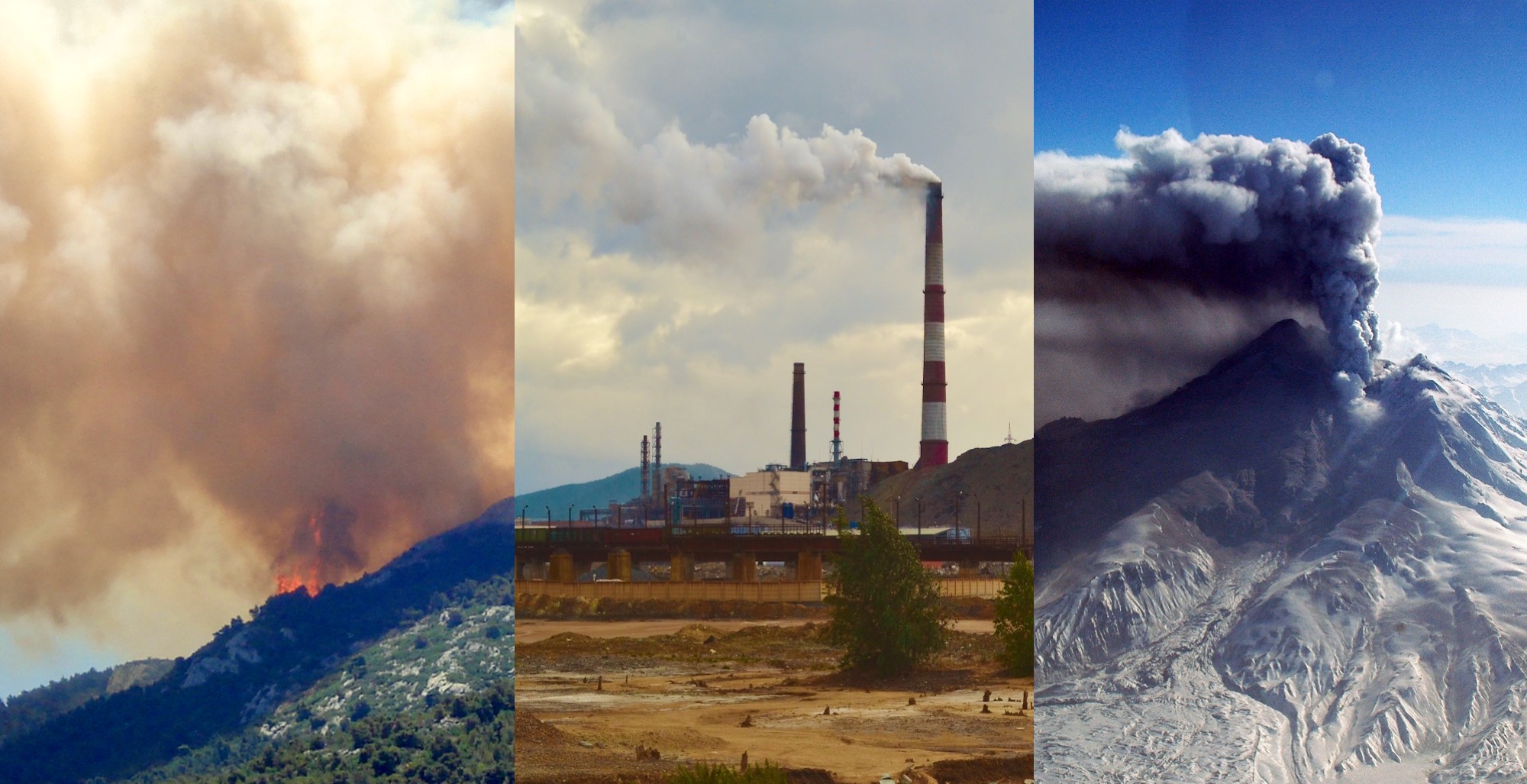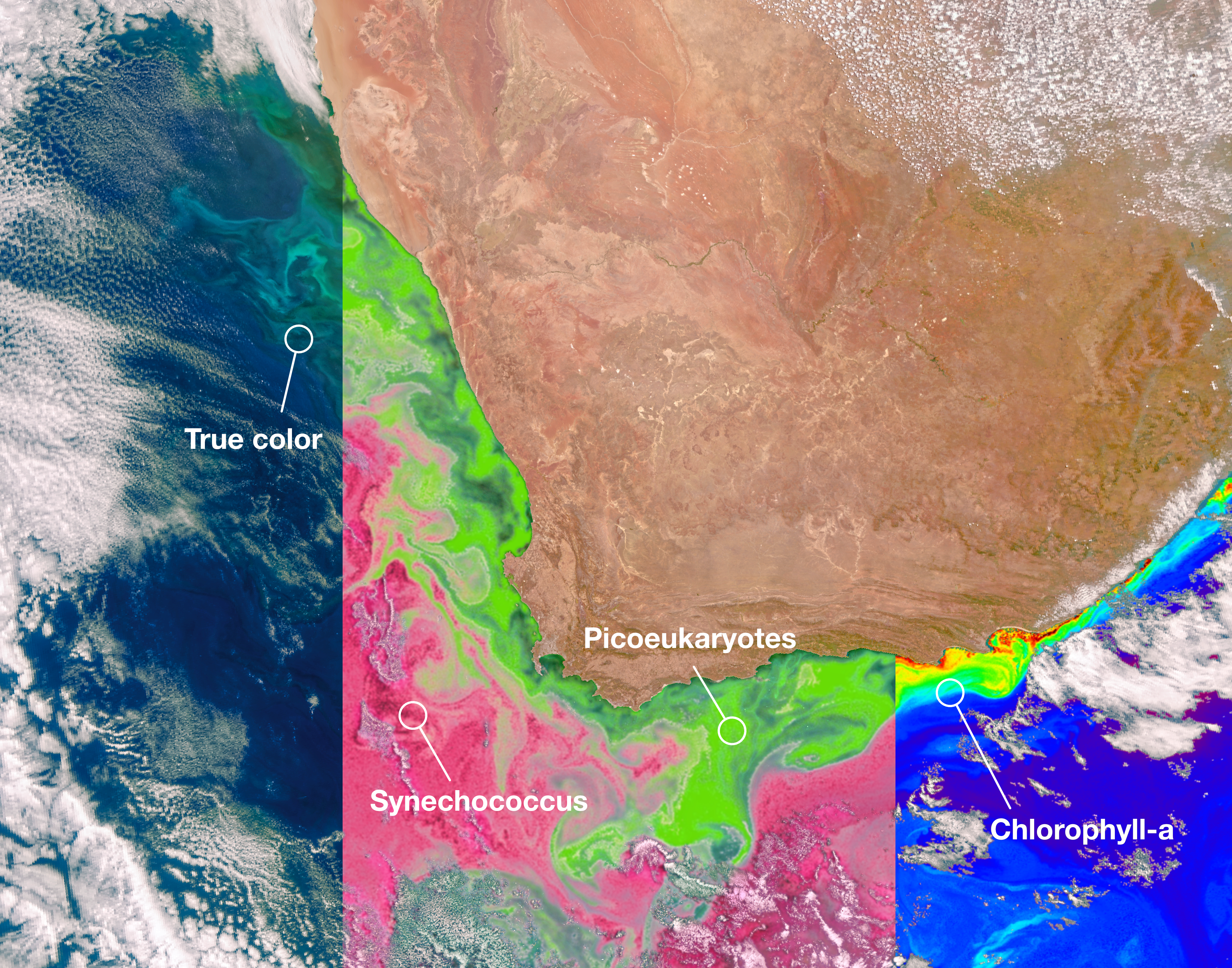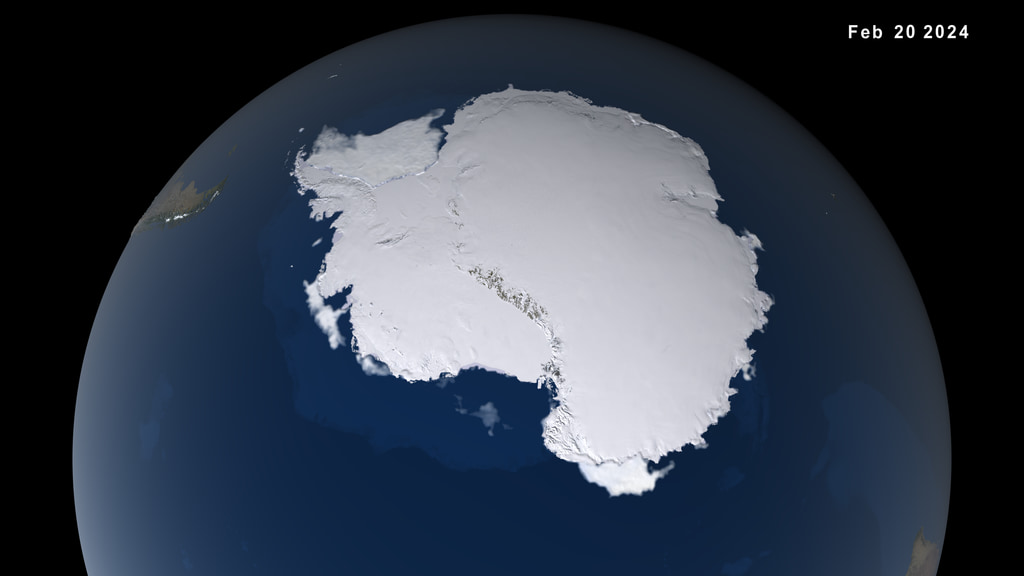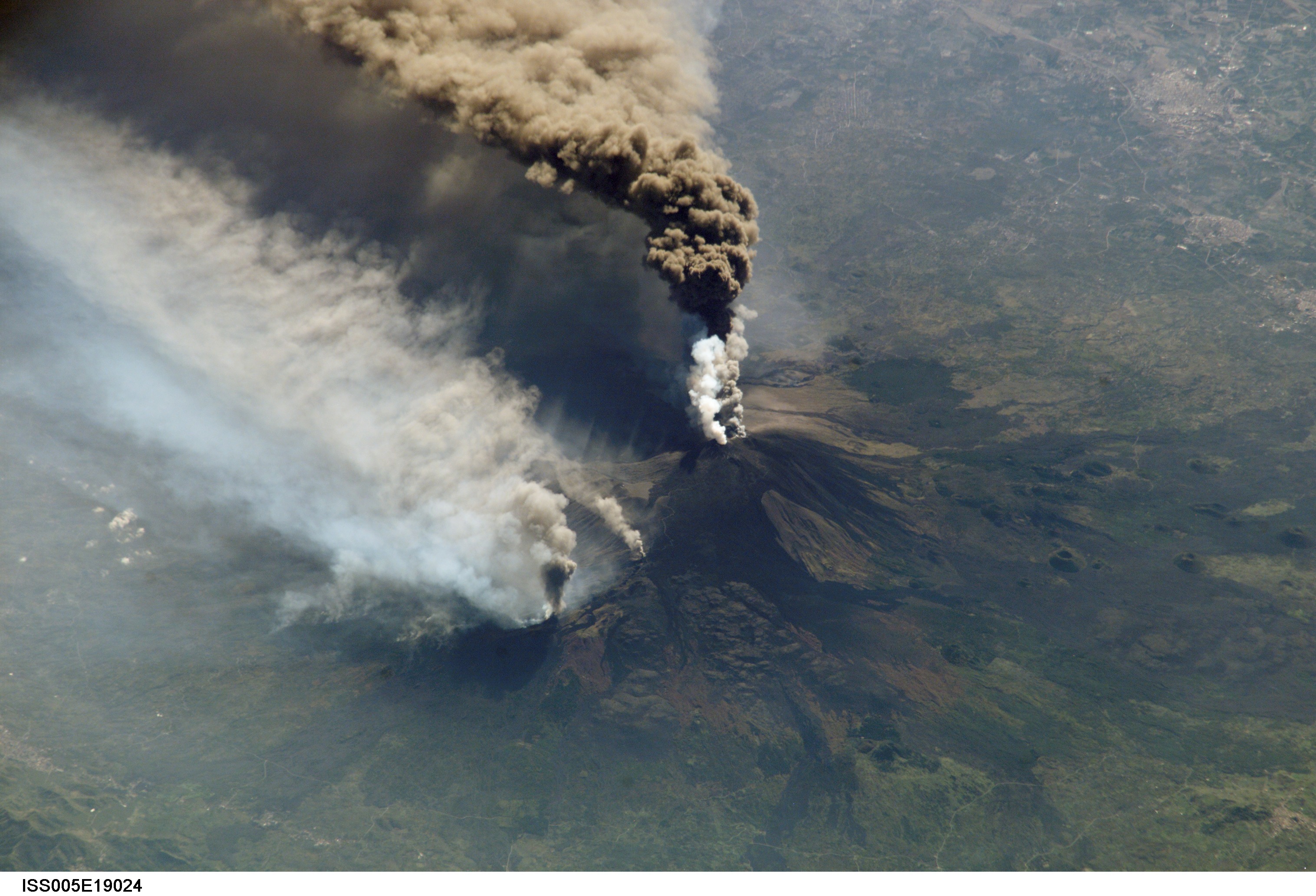5 min read

Aerosols are small particles in the air that can either cool or warm the climate, depending on the type and color of the particle.
We often think of aerosols as spray paint, insect repellant, or similar substances sprayed from a can. But aerosols are actually small particles or droplets that float in the air, and it turns out these little particles can have big effects on Earth’s climate.
Aerosols come in many forms. They can be natural, like wildfire smoke, volcanic gases, or salty sea spray. Human activities can also generate aerosols, such as particles of air pollution or soot.
The role of aerosols in climate science is complex. In general, light-colored particles in the atmosphere will reflect incoming sunlight and cause cooling. Dark-colored particles absorb sunlight and make the atmosphere warmer. Because different types of particles have different effects, aerosols are a hot topic in climate research.
Explosive volcanic eruptions can inject gases all the way into the stratosphere, which is the layer of the atmosphere that begins around 33,000 feet (10,000 meters) overhead.
Volcanoes emit sulfur dioxide gas, which combines with water in the atmosphere to form tiny particles that can circle the globe and stay in the air for a few years, depending on how big the plume is and how high it goes. These light-colored sulfate aerosols block incoming sunlight and cool the atmosphere. Mount Pinatubo’s enormous eruption in 1991 is a recent example. The sulfates from the eruption cooled the atmosphere by 0.7 to 0.9° F (0.4 to 0.5 °C) and made 1992 and 1993 the coolest years in the past 35 years.
Burning fossil fuels releases sulfate particles and sulfur dioxide (SO2) which, like volcanic aerosols, can reflect sunlight and make the atmosphere cooler. Unlike volcanic aerosols, air pollution does not travel very high in the atmosphere, so it only lasts for 3 to 5 days. But air pollution aerosols are produced continuously, so these particles are a constant presence.
In an ironic twist of climate science, air pollution caused by burning fossil fuels has a slight cooling effect on the planet, which is the opposite of the warming caused by greenhouse gases. But there’s nothing beneficial about air pollution for the environment or human life. Air polluted by fossil fuels leads to the premature death of around 8 million people globally each year. Tiny particles emitted during fossil fuel combustion can be inhaled, and they can cause asthma, respiratory infections, lung cancer, and heart disease.
The COVID-19 pandemic showed what can happen if the humans reduce their aerosol pollution. Fossil-fueled air travel, driving, electricity use, and industrial activity all decreased sharply in the spring of 2020. This led to cleaner, clearer air, which caused a slight warming -- up to 0.2 to 0.5° F (0.1 to 0.3° C) -- in some places. But at the same time, this reduction in air pollution was estimated to have saved 11,000 lives in Europe and 77,000 lives in China. And people in some cities enjoyed clear horizons and views for the first time in years.
Soot is made of dark particles of carbon from burning fossil fuels, wood, or other plant matter. These dark particles absorb sunlight and warm the atmosphere. Soot leads to additional warming when it settles onto snow and ice because it makes the surface darker, which causes faster melting.
Wildfires, cooking fires, industrial activities, and diesel engines are major sources of soot. Reducing soot emissions would have a quick cooling effect on the atmosphere, which would bring the added benefit of improving human health.
Scientists are working to better understand the ways aerosols interact with clouds. Some aerosols from human pollution can change the size or lifetime of water droplets inside clouds. When water droplets become smaller, clouds reflect more sunlight. Overall, this has a cooling effect on the atmosphere. Similarly, some aerosols like dust can influence how ice particles form in colder clouds. This is an area of active research, so stay tuned for updates as the science develops.
If not for aerosol pollution, Earth would be even warmer than it already is. Aerosol air pollution has made the planet about 0.7° F (0.4 °C) cooler than it otherwise would be, according to the 2021 report by the Intergovernmental Panel on Climate Change (IPCC). For comparison, greenhouse gas emissions have added 2.7°F (1.5°C) of warming.
This makes for an interesting predicament. It might seem that air pollution is oddly helpful to counteract climate change. But that doesn’t mean we need air pollution to keep the world slightly cooler. As people and economies shift to energy forms that emit less particulate pollution, there will be a gradual reduction in air pollution aerosols, which could cause a temporary warming effect. Because these changes will occur gradually over several decades, it’s unlikely to cause much of a temperature rise.
Over the long haul, reducing emissions of heat-trapping gases will more than make up for any temporary warming. Plus, cleaner air will save millions of lives.
NASA aerosol visualization showing smoke plumes, dust clouds, and salt spray from tropical storms
Check your understanding of clouds and aerosols with a NASA quiz from the Know Your Earth series.







